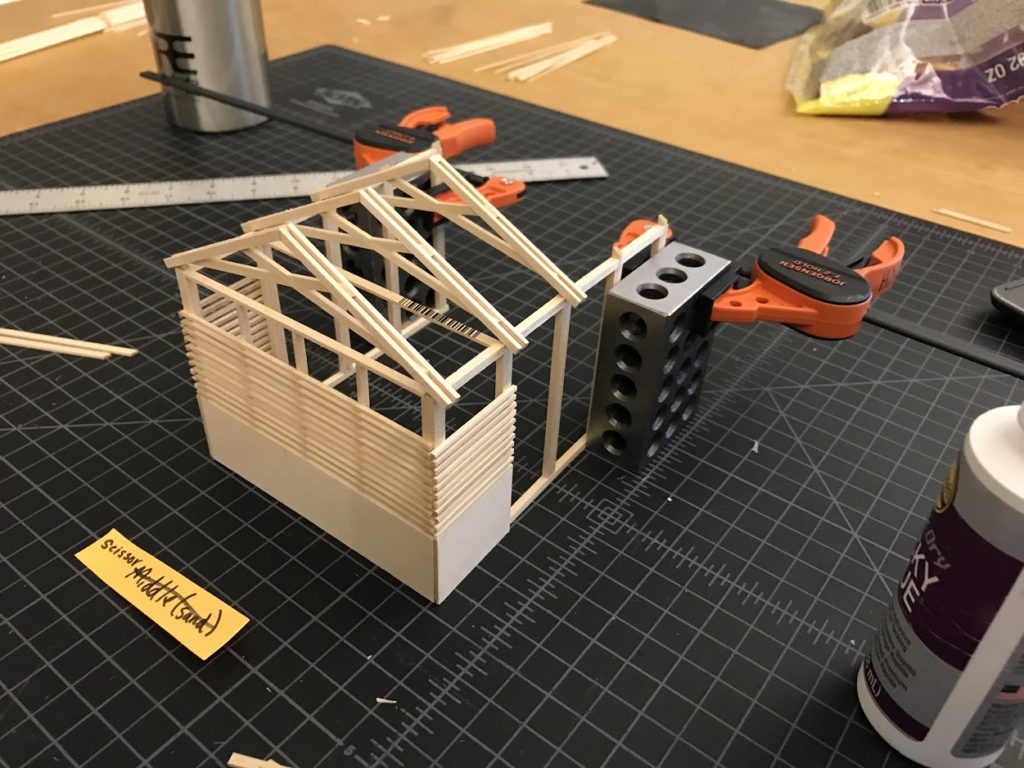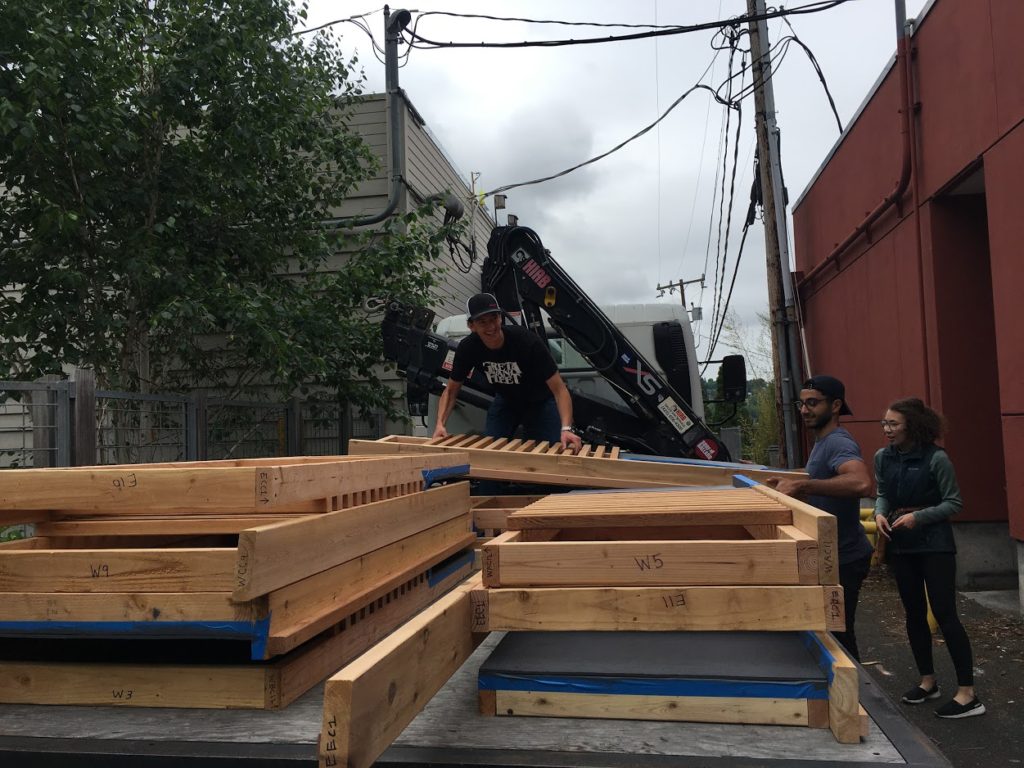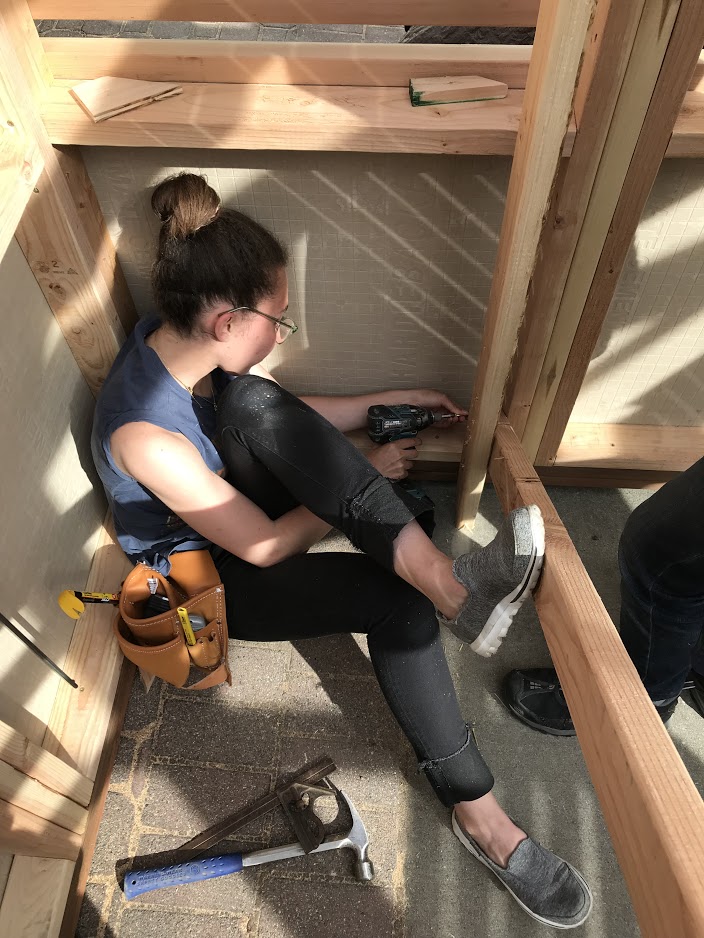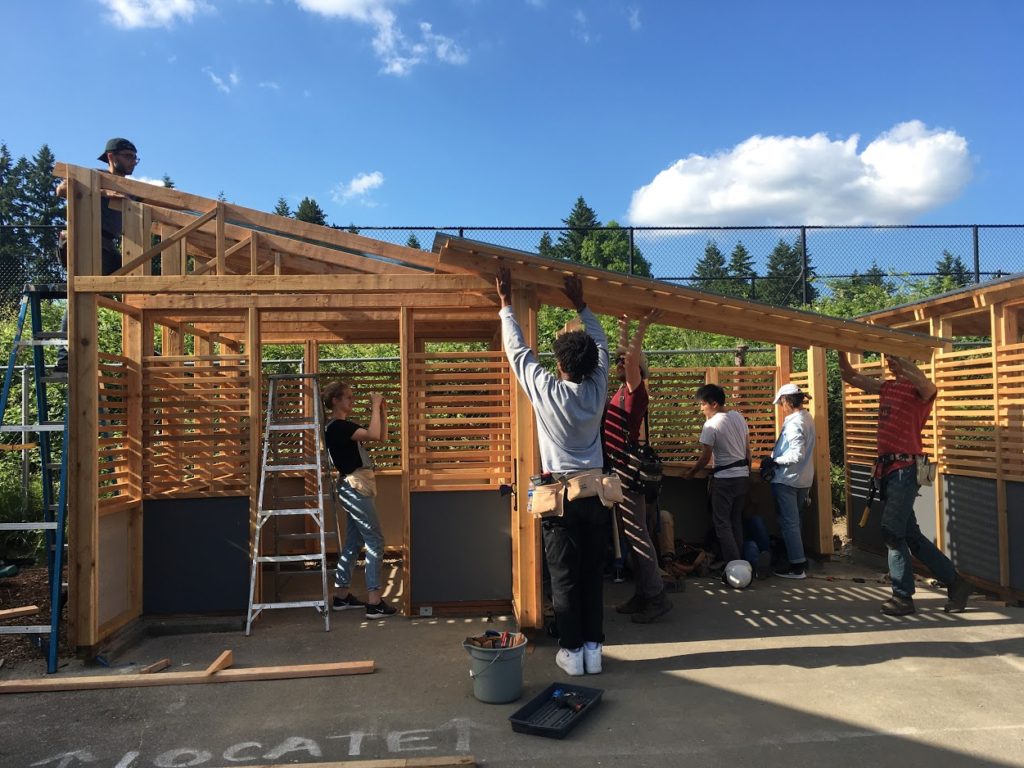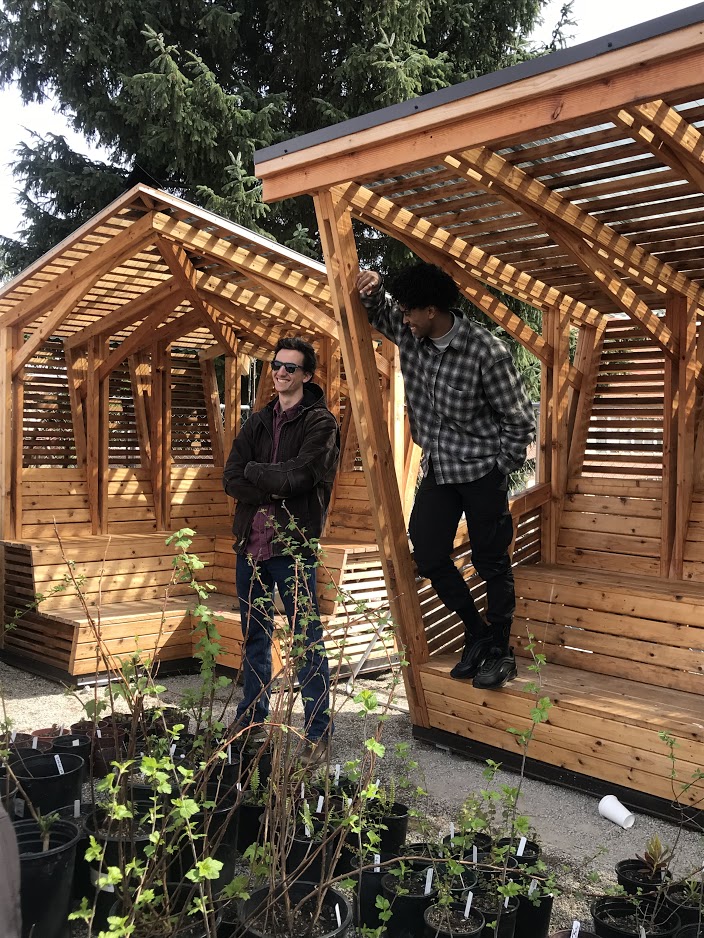The 2019 Neighborhood Design/Build project “The Toolbox” was designed and constructed for a program at Seattle’s Nathan Hale High School that teaches students how to grow plants, understand global food systems, and care for the native ecosystem. The high school students in the program pass their skills and knowledge back to the local community through regular plant sales, hands-on projects, and dedicated community service.
Working alongside students, teachers, administrators, and the board for the horticulture program, the Spring 2019 Neighborhood Design/Build Studio was hired to design and construct a storage and workspace area on an undeveloped corner of the site.
The program described a need for an alternate solution to the high school’s previous storage strategy, which consisted of a large shed which was very dark, narrow, and disorganized. The bottle-neck nature of this shed resulted in wasted class time where students waited long periods of time searching for and retrieving tools. The program also had two storage sheds on the other side of the fence which held flats for plants and small to large pots. The school planned for these to be better organized once a new storage solution was built. In addition to storage, the program expressed interest in having a covered workspace with room for about 10 students, which would act as a potting workstation. The workspace would be used for their annual plant sale, where hundreds of visitors came to purchase goods from the garden – a major fundraising event for the horticulture program.
In response to the client needs, the university students of the studio worked together to present “The Toolbox” scheme to the high school stakeholders. The scheme aimed to break down the volume of the existing shed in order to allow for more light and ventilation, as well as prevent bottle-necking with better vertical organization. As such, the team proposed three structures: a shaded work area flanked by two shallow sheds. By building three structures that were each under 120 square-feet, the need for permitting was by-passed. The central covered workspace is flexible to act as an additional planting station for most of the year, with the ability to adapt to a check-in and purchase area for the annual plant sale. The scheme was enthusiastically received by the committee, and given the approval for construction.
Simple construction techniques and local materials were used throughout. The spaces are day-lit through a smoked corrugated polycarbonate roof and clerestories in the sheds, which also provide natural ventilation. Salvaged wood was used for the central worktable and formwork, and concrete was mixed and poured on site. The wall panels and roof trusses were prefabricated in the studio and trucked to the site for assembly.
At the end of this project, the Design Build students came out with a variety of practical skills. These skills involved more than just operating tools. The processes of setting up a site, mass-producing components, and erecting straight walls helped to build the structures and the confidence of the students themselves.
Congratulations to the talented team who brought The Toolbox to life!
